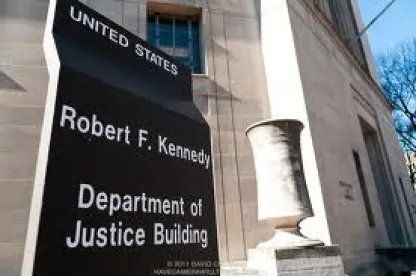Last week, President Trump declared the opioid crisis a public health emergency. Tomorrow, the President’s opioid Commission will issue its final report with recommendations on how to combat the country’s drug crisis. While both important, neither have a significant impact on law enforcement efforts to address the crisis. That impact will likely come from public reaction to reports suggesting that a 2016 law stripped the Department of Justice (“DOJ”) and Drug Enforcement Administration (“DEA”) of certain police powers to enforce the nation’s drug laws.
Congress passed the Ensuring Patient Access and Effective Drug Enforcement Act (the “Act”) in the Spring of 2016 with little fanfare, and with unanimous consent in the House and Senate. Over one year later, the Act is the subject of great debate and the source of tension among lawmakers, law enforcement, pharmaceutical manufacturers, distributors and wholesalers, and public health advocates.
Before the Act’s passage, DEA regulations permitted the DEA Administrator to issue an immediate suspension order (“ISO”) of a DEA-registered business or health care provider where there was an “imminent danger to the public health or safety.” However, “imminent danger” was not defined, and was subject to loose and inconsistent interpretation. In seeking ISOs, DEA conducted historical analyses of a registered entity’s sales and would claim that the volume of orders, coupled with a failure to report suspicious orders, constituted the requisite “imminent danger” to the public. This finding, which was not subject to judicial review, would temporarily strip a registered business or health care provider of its license to manufacture, distribute or dispense controlled substances pending a hearing before a DEA administrative law judge. Unhappy that DEA could claim “imminent danger” based on past practices, without regard to remedial measures the registered business might have taken, industry lobbyists urged lawmakers to enact a statute that would more clearly define “imminent danger”[1] and would allow a company to present a remedial action plan prior to the imposition of an immediate suspension order.
Critics, led by a former DEA insider-turned-whistleblower, whose allegations were aired in a recent 60 Minutes-Washington Post report, say that the new Act eviscerated DEA’s ability to stop the illegal flow of addictive opioid medications to the public. They claim that “[t]he new law makes it virtually impossible for the DEA to freeze suspicious narcotic shipments from the companies.[2] Similarly, advocates for increased government crack-downs argue that the Act’s new meaning of “imminent danger” and heightened evidentiary standard requires DEA to pierce through “too many levels between distributors and manufacturers to logically establish any causation of death, serious bodily harm, or abuse to a specific patient down the chain to support” an ISO. [3] The reaction to the whistleblower’s allegations was explosive. Among other things, it led to the withdrawal of President Trump’s nomination of Representative Tom Marino of Pennsylvania, a sponsor of the Act, to be the nation’s next drug czar. There is surely more fallout from the Sixty Minutes-Washington Post piece, and it will likely result in scaling back of the Act.
Meanwhile, the President’s Commission on Combating Drug Addiction and the Opioid Crisis (the “Commission”), which will release its final report tomorrow, recommended numerous enforcement measures to combat the opioid epidemic. For example, the Commission suggests that DEA require prescribers to participate in continuing education to better understand the potential for drug misuse before their registrations to prescribe opioids can be renewed. In addition, the Commission urges the President to endorse the federal Prescription Drug Monitoring Act, which requires states that receive federal grants to track and actively manage controlled substances through a state-wide prescription drug monitoring program (“PDMP”). As an alternate to enforcement, the Commission also calls for drug courts in every federal district nationwide. The Commission expects that drug courts will advance individuals’ treatment and recovery efforts, while saving enforcement efforts for those in the medical supply chain that manufacture, distribute, prescribe and dispense large volumes of opioids in the first instance. Finally, the DOJ has leaned on its Corporate Fraud Strike Force and the Opioid Fraud and Abuse Detection Unit to ferret out opioid-related health care offenses and to hold responsible actors accountable.
As the DOJ and DEA retool and consider new enforcement measures, the following industry participants must remain alert:
Doctors: DOJ and DEA will prioritize identifying doctors who overprescribe opioids or who prescribe them without a legitimate medical purpose. Both agencies are well-equipped to seek out not only doctors who overprescribe opioids by providing weeks’ worth of pills when only a few days are necessary, but also other doctors who operate lucrative “pill mills” that distribute opioids for non-medical reasons.
Pharmacists: Pharmacists are on the front line of providing medical care and have a corresponding responsibility to ensure that prescriptions are legitimate. Accordingly, pharmacists must exercise a high degree of professional judgment when assessing a patient’s condition and that patient’s need to use opioids to treat a condition. Pharmacists should be familiar with PDMP systems and know how to balance patient pain with overprescribing opioids. Concomitantly, chains that employ pharmacists have an obligation to educate and train their pharmacists on the safe use of opioids and the potential for misuse and abuse and will bear responsibility for a pharmacist’s failure to detect illegitimate opioid prescriptions.
Manufacturers and Wholesalers: DOJ and DEA will continue to monitor large pharmaceutical companies’ business practices to identify any drug makers who illegally incent doctors to overprescribe opioids, commit fraud on insurance companies, employ deceptive marketing techniques that deceive patients, or who fail to detect and report suspicious orders.
In sum, the opioid crisis, while largely viewed as a health crisis, has important enforcement impacts that are likely to affect industry in a number of ways.
[1] 21 U.S.C. § 824(d) (2016). Specifically, the Act requires that DEA prove that “there is a substantial likelihood of an immediate threat that death, serious bodily harm, or abuse of a controlled substance will occur in the absence of” an ISO.
[2] Scott Higham & Lenny Bernstein, “The Drug Industry’s Triumph Over the DEA,” The Washington Post (Oct. 15, 2017), https://www.washingtonpost.com/graphics/2017/investigations/dea-drug-industry-congress/?hpid=hp_hp-top-table-low_deanarrative-hed%3Ahomepage%2Fstory&utm_term=.9b6172efd59d.
[3] John J. Mulrooney, II & Katherine E. Legel, Current Navigation Points in Drug Diversion Law: Hidden Rocks in Shallow, Murky, Drug-Infested Waters, 101 Marq. L. Rev. (forthcoming Feb. 2018).





 />i
/>i
